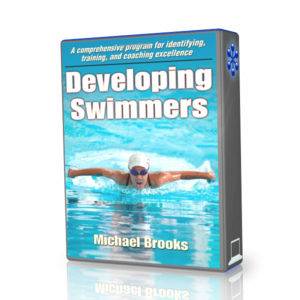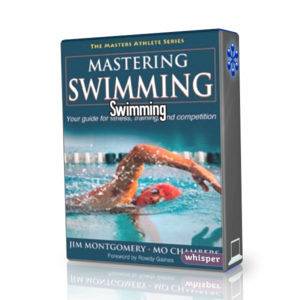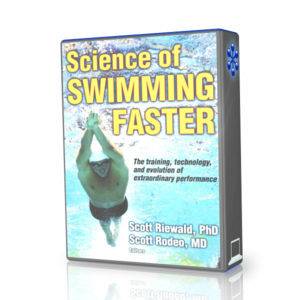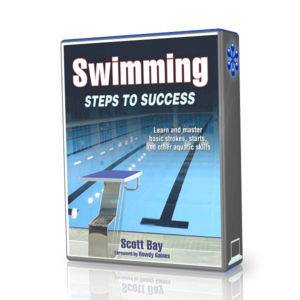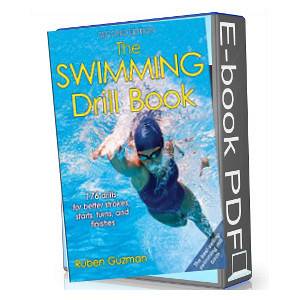The path of the butterfly underwater arm stroke is similar to the freestyle arm stroke, only it is done with both arms simultaneously. It is an extremely powerful arm stroke, and for a short distance can rival the freestyle in speed. However, because it is just not as sustainable as the freestyle, it is even more important to practice the most economic butterfly arm stroke possible, so that butterfly can be done well for longer. The goal of the following arm stroke drills for butterfly is to develop a productive arm stroke that maximizes power and minimizes effort.
Pitch to Press
THE PURPOSE OF THIS DRILL
- Feeling the path of the butterfly arm stroke
- Learning to press back, and not down
- Using correct hand pitch to maintain pressure on the water
HOW TO DO THIS DRILL
- Step 1 : - Stand in waist deep water. Keeping your feet firmly on the bottom of the pool, bow forward so your face is in the water. Look at the bottom of the pool. Extend your arms forward on the surface of the water slightly wider than your shoulders. With your palms down, position your thumbs slightly lower than your pinkies.
- Step 2 : - Stretch your arms forward, so that your elbows are locked. This should extend your reach, and position your hands slightly farther apart. As your hands achieve their longest reach, bend at the wrists slightly so your palms and fingertips are lower than your wrists and pitched outward. Sweep your palms around so you are pressing back on the water, not pushing down. Allow your forearms to follow your hands, but keep your elbows high and firm. Watch your hands as they pass your face, pressing back and sweeping slightly inward, so they are closer together than their starting point.
- Step 3 : - As your hands continue pressing back and pass your shoulders, they should also sweep by your elbows. Adjust the position of your hands so they maintain firm pressure on the water. As your hands pass under your belly they should be at their closest point together, closer together than your elbows. Again adjust the pitch of your hands so they can continue pressing back. The arm stroke finishes with the hands pressing back quickly, until the arms are straight and outside each hip.
- Step 4 : - Take a breath and return your hands and head to the starting position, slightly wider than your shoulders. Repeat the arm stroke, stretching forward until your elbows lock, then sweeping your palms around and positioning them to press back on the water, with your elbows high. As your hands press back towards your belly and get closer together, change your hand pitch again to sweep quickly back, until your arms are straight and out from your hips.
- Step 5 : - Continue performing the butterfly arm stroke several times. Constantly reposition your hands so they press back on the water and not down. Practice until you can perform several quick arm strokes in a row, producing enough pressure back on the water so it is difficult to maintain your footing on the bottom of the pool.

DRILL FEEDBACK CHART
| Problem | Modification |
| My hand press down then up. | Change the pitch of your hands to press back on the water from the beginning through to the end of the stroke in order to move forward. Otherwise your efforts will be used to move up and down. |
| My hands are almost touching at their closest point. | Correctly positioned, your thumbs might be fairly close, but the fingertips of each hand should be pointing at the bottom of the the pool. Make sure that your elbows are not leading your stroke. They should stay high and firm throughout the stroke. |
| It feels like a large sculling action. | Exactly! You change the pitch of your hand to maintain pressure on the water. Press out with your thumbs down, and in with your thumbs up. |
Sweeping Question Marks
THE PURPOSE OF THIS DRILL
- Feeling the path of the butterfly arm stroke
- Sweeping wide to narrow
- Sweeping deep to shallow
HOW TO DO THIS DRILL
- Step 1 : - Push off the wall face down in the water, arms extended in front of your shoulders. Achieve a downhill, and high hip float. Look at the bottom of the pool. While still gliding forward, perform a single butterfly stroke with both arms simultaneously moving in a wide to narrow line. Stretch forward, sweep out and around, then inward toward your belly. Finish by pressing back quickly past your waist. Notice that the lines you have traced with your arm stroke resemble two question marks, one the mirror image of the other floating flat on the surface of the water. Stand and breathe.
- Step 2 : - Return to the wall, and push off for the butterfly again. Float downhill with high hips. Look at the bottom of the pool. Using the momentum of your push off, again do one butterfly stroke tracing a deep to shallow line. Stretch forward, sweep down and around, then upward under your belly. Finish by pressing back quickly past your waist. Notice that the lines you have traced with your arm stroke resemble two question marks, one the mirror image of the other floating perpendicular to the surface of the water. Stand and breathe.
- Step 3 : - Return to the wall, and push off for the butterfly once again. Look at the bottom of the pool and achieve a high hip downhill floating position. With the forward motion of your glide, do a butter- fly stroke tracing a wide to narrow, and deep to shallow path at the same time. Stretch forward, sweep out and down, around, then inward and upward under your belly. Finish by pressing back quickly past your waist. Notice that the lines you have traced with your arm stroke resemble question marks floating diagonally in the water, one the mirror image of the other.
- Step 4 : - Stand and breathe. Continue to practice the path of the butterfly arm stroke tracing deep to shallow and wide to narrow question marks at the same time.

DRILL FEEDBACK CHART
| Problem | Modification |
| My arm stroke goes straight back, not like question marks. | You will be able to achieve a longer, more productive stroke if you use the sweeping question mark arm stroke. You will be able to use fewer strokes, and therefore less energy to cross the pool. |
| My arms are shallow the whole way. | Make sure you are holding your elbows firm to start the stroke. Move your hands first, and allow them to pass under your elbows to achieve depth. |
| My arms are deep the whole way. | To be strongest in the middle of the arm stroke, allow your hands to sweep closer under your belly. |
One-arm Butterfly
THE PURPOSE OF THIS DRILL
- Feeling the rhythm of the butterfly arm stroke
- Practicing the path of the arm stroke
- Pressing back on the water
HOW TO DO THIS DRILL
Step 1: Push off the wall face down in the water, arms extended in front of your shoulders. Achieve a downhill, high hip float. With your right hand remaining in the extended position, perform a single butterfly stroke with your left arm. Stretch forward, sweep out and around, then inward under your belly. Finish by pressing back quickly past your waist. Breathe toward the moving arm, and do an over-the-water, freestyle-like recovery.
Step 2: Do another stroke with the same arm, accompanied by a light dolphin action. When your hand stretches forward, your chest should be low in the water. Your feet should snap down as you first press on the water. Then, when your hand presses back to the finish, your chest should be high, as your feet should snap down again. Remem- ber that the dolphin action should be generated high in the body, without exces- sive knee bend. Repeat the one arm butterfly several times, tracing the wide to narrow, and, deep to shallow line of the stroke. Maintain pressure back on the water, and use two dolphins with each arm stroke. The first dolphin propels you into the beginning of the arm stroke. The second dolphin assists the fast finish of the arm stroke.
Step 3: Continue practicing your one-arm butterfly arm stroke, accompanied by a rhythmic light dolphin action. Focus on accelerating your stroke to the rear. Maintain a hand pitch that you can constantly press back on the water, not down or up. From front to back, stretch forward, sweep out and around, inward under your belly, wide to narrow, and, deep to shallow. Finish by pressing back quickly. Breathe. Recover. Repeat to the far end of the pool.
Step 4: After resting, push off the wall and leave your left arm extended. Perform the one-arm butterfly with your right arm. Match your light dolphin to accompany the start and the finish of the stroke. Accelerate the stroke toward the rear. Continue to the far end of the pool.
Step 5: Practice the one-arm butterfly for several lengths of the pool. Keep your hips high and time the kick to match the beginning and end of your arm stroke. Feel your dolphin move through your body and assist you in catching water at the beginning of the stroke. Feel your dolphin assist you again to finish the stroke with speed.

DRILL FEEDBACK CHART
| Problem | Modification |
| I am leaning to one side a bit. | That is okay. The more forward momentum you produce, the less noticeable this will be. Focus on accelerating your arm to the back of the stroke, and maintaining pressure back on the water the whole time. |
| My hands are aimed inward at the start of the stroke. | Starting in the correct position is important in order to begin the stroke from a position of power. Your hands should enter at shoulder width apart or even wider, but not closer. Your fingertips should be pointing forward, and a bit outward. In this position, be sure to lock your elbows and stretch forward to the far end of the pool. |
| I am not accelerating at the end of the stroke. | Make sure you are starting the stroke by moving your hands, not your elbows. If your elbows move first, you will not be in position to accelerate your hands to the end of the stroke. |
Left Arm, Right Arm, Both Arms
THE PURPOSE OF THIS DRILL
- Feeling the line of the stroke
- Practicing accelerating to the back of the stroke
- Experiencing butterfly rhythm
HOW TO DO THIS DRILL
- Step 1 : - Push off the wall face down in the water, arms extended in front of your shoulders. Achieve a downhill float. Maintain high hips. With your right hand remaining in the extended position, perform a single butterfly stroke with your left arm, accompanied by a rhythmic light dolphin action. Focus on accelerating your stroke to the rear. Breathe toward the moving arm, and recover, like freestyle, over the water.
- Step 2 : - As your left arm reaches the front and engages the water, your feet should snap down. As they do, begin stroking with your right arm, leaving your left arm extended in front of you. Accelerate to the back again. Allow your feet to snap down again as you finish the stroke. Recover.
- Step 3 : - Now, with both arms extended in front, perform a butterfly arm stroke with both arms. Bow forward and stretch your elbows to the locked position as your feet snap down. Press out and sweep around, positioning your hands to press back. Accelerate your arm stroke as your hands move past your belly, closer together than your elbows. Finish by pressing quickly back toward your hips as your feet snap down again. Return your arms over the surface of the water to the starting position in front.
- Step 4 : - Repeat the sequence. Left arm, right arm, both arms, maintaining a light rhythmic dolphin that matches the beginning and the end of the stroke. Maintain pressure back on the water, and an accelerating stroke. Continue to the far end of the pool. Rest, then practice again until you are moving comfortably and rhythmically through the water.

DRILL FEEDBACK CHART
| Problem | Modification |
| My arms sink down in front. | Remember to stretch your arm forward when you enter. Reach toward the far end of the pool, then sweep around and press back on the water, not down. |
| I don't know when to breathe on the stroke with both arms. | For this drill, don't breathe on the double arm stroke. Focus on the path of the stroke, maintaining constant pressure back on the water, and accelerating your stroke toward your hips. You can breathe on the one-arm strokes. |
| My arms get stuck at the rear on the two-arm stroke. | Make sure your hands are the first part of your arm to move. Hold your elbows firm. If your elbows move first, your hands won't clear the water at the rear. |
The Round Off
THE PURPOSE OF THIS DRILL
- Pressing outward the end of the stroke
- Practicing a quick finish of the stroke
- Learning to release the water in back
HOW TO DO THIS DRILL
- Step 1 : - Push off the wall face down in the water, arms extended in front of your shoulders. Achieve a downhill float. Do several dolphins in a row, beginning each high in your body and snapping downward to your feet. On the sixth dolphin, start your arm stroke, bowing forward as your reach, then sweeping around and back, closer under your belly.
- Step 2 : - As your hands accelerate toward the end of your stroke, pitch your palms slightly outward. Press back and outward from your body in a fast finish as your feet snap down again. Your hands should clear the water between your waist and your hips, several inches away from your body. Return them to the front, extended and slightly wider than your shoulders.
- Step 3 : - Do another arm stroke, tracing question marks. As your hands approach their closest point under your belly, press them back with speed, and outward like a J. Your hands should release the water and rise easily up through the surface with your pinkies up.
- Step 4 : - Return them to the front, again. Stretch forward and engage your palms. Sweep around and press back against the water. Feel your hands get closer together under your belly, then accelerate into your fast finish, rounding off at the rear of the stroke in a J shape out from your body. Feel your hands rise easily up through the surface of the water with no resistance. Use their momentum to return to the front. Repeat several times, accelerating to the rounded off finish of your stroke.

DRILL FEEDBACK CHART
| Problem | Modification |
| My arm stroke makes more forward motion when I push straight back. | With the round off, your hands are actually travelling the same distance, but not so far back along your body. When the arm stroke goes straight back, the path back to the front takes longer, so the kicks have to be spaced farther apart in order to occur at the most beneficial points in the stroke. This can produce dead space or loss of momentum. |
| My hands come out of the water, palms up. | Make sure you are not lifting the water up at the end of the J. Position your hands so you are pushing it back and outward. Your pinkie should leave the water first. |
| This makes my stroke short. | Again, the distance of the actual stroke path is the same, it just curves outward more. Your stroke turn-over will be quicker, because the recovery path is shorter. This allows you to spend more time with your hands pressing against the water, and less time with them in the air. |

